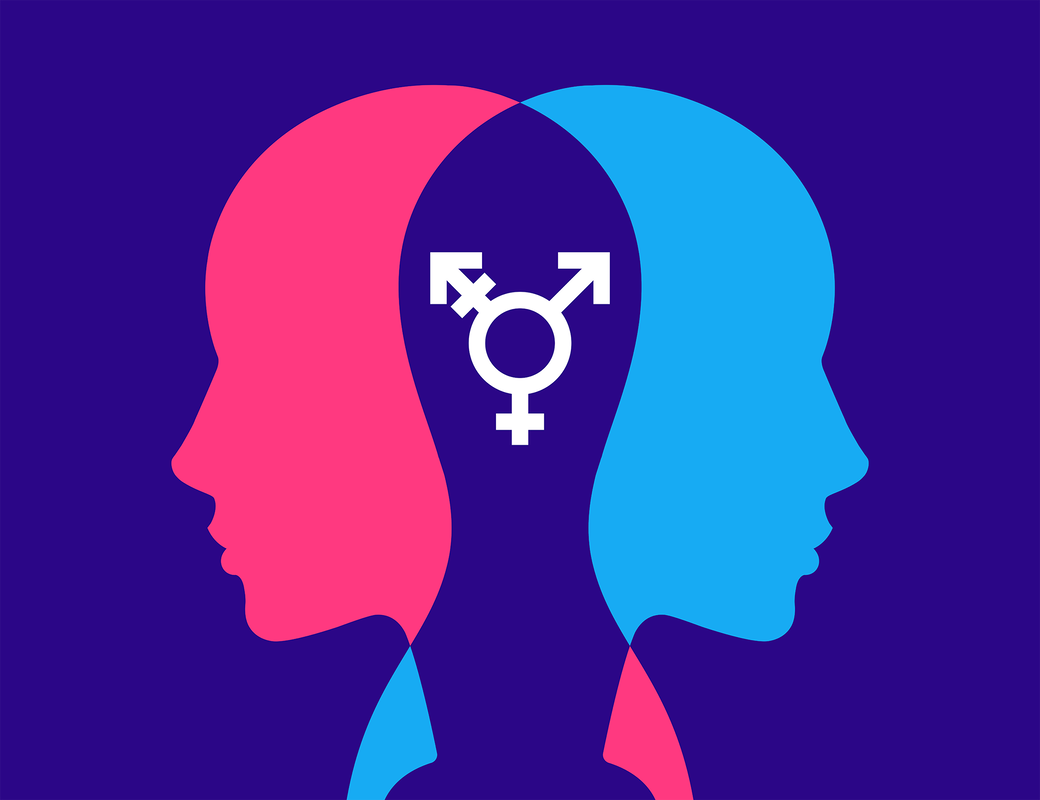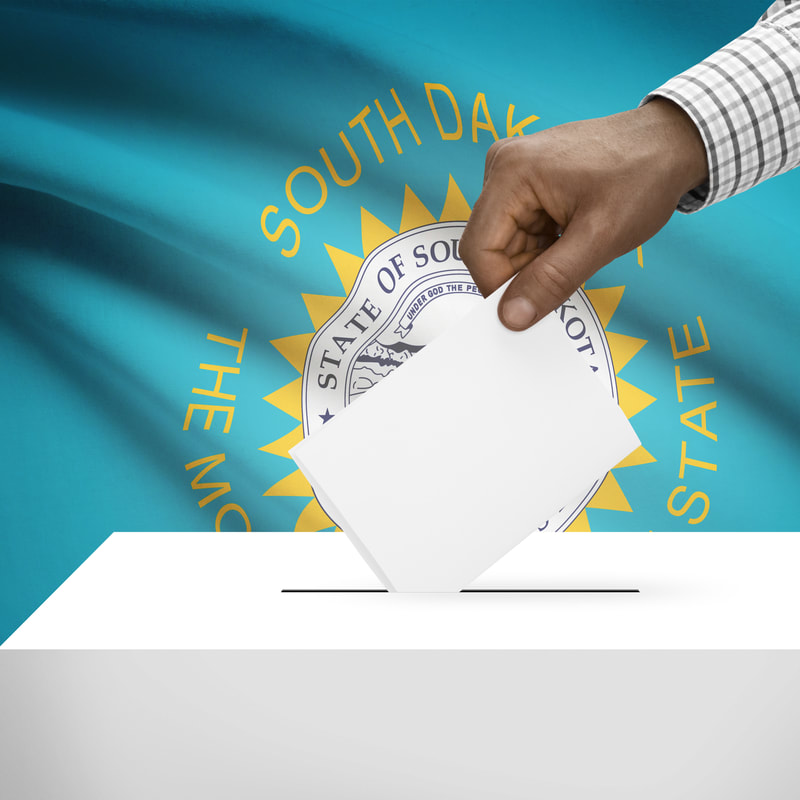|
Boston Children’s is home to the first U.S. pediatric and adolescent transgender health program. The Boston Children’s Hospital, which operates the first transgender health program for children and adolescents in the nation, was forced to lock down after conservative conspiracy theorists spread misinformation on an account known as “Libs of TikTok.” After a bomb threat Tuesday, police descended on the hospital, barricading families inside and leaving them waiting outside for updates, the WCVB reports. The threat was downgraded two hours after the initial call, but police have not yet disclosed the facts surrounding the threat or any additional information.
Since then, the hospital has taken down videos pertaining to the procedures it performs on transgender patients to try and stem harassment of staff and patients and is coordinating with law enforcement. Similar harassment has been reported by hospitals across the country.
2 Comments
Health care as a human right is a principle building momentum in the current political climate, where proposals for universal health care have again taken center stage. A healthy society is composed of healthy individuals. Yet, civil rights violations resulting in many racial and ethnic disparities still need to be addressed in order to deliver equitable health care and coverage. Health Care: A Civil Rights Issue
White supremacy influenced an evolving, private, job-based, health care infrastructure that deliberately excluded the Black population, preventing it from sharing in its societal benefits. Our health care history is another disgraceful chapter where race often determines treatment and outcomes. The actual desegregation of the medical system did not eliminate the disparities in societal benefits between whites and Blacks. Since slavery was abolished, segregated health care determined your standard of living, your longevity, and your dignity in death. Charitable health organizations, formerly devoted to helping the “poor and dispossessed,” disavowed themselves of the obligation to help Black people in need of health care, instead helping “citizens only” during the Reconstruction Era. In the late 1800s, while Germany was creating Europe’s first national health care system, America staked deeper roots in segregated private health care and charity-based systems. While other nations focused on access and equality, our deep-seated attachment to America’s racial hierarchy tied us to a health care system encompassing racial disparities by design. Decades of Jim Crow, lynchings, and unceasing injustice birthed the civil rights movement, incorporating into its mission systemic transformations including desegregated hospitals and government-funded health programs. The National Association for the Advancement of Colored People (NAACP) and the National Medical Association (NMA)—the Black iteration of the then segregated American Medical Association (AMA)—fought for the passage of Medicare and Medicaid. When Medicare funds were distributed to almost every hospital providing care to elderly patients, formal segregation in hospitals ended, mandated by the Title VI nondiscrimination clauses. Not only did this funding end hospital segregation, but it radically changed health outcomes in a divided system where the color of your skin determined your quality of treatment and your mortality. My generation doesn’t recall a pre-Medicare, pre-Medicaid America. These programs were victories of a greater civil rights strategy to desegregate and equalize health care and coverage. Yet, discourse surrounding the movement that ushered in the Civil Rights Act is centered around voting rights, education, and integration. Title VI of the Civil Rights Act protects people from discrimination based on race, color, or national origin in programs and activities that receive federal assistance. The Civil Rights Act served as a health care bill. Role of Health Insurance in Reducing Racial Disparities in Health Care Insurance status is a fundamental predictor of the quality of care a patient receives. Generally speaking, private insurance delivers higher-quality and more consistent care than publicly funded insurance programs like Medicaid and CHIP (Children’s Health Insurance Program), and being completely uninsured ranks last for quality and consistency of care. Racial disparities in health coverage account for barriers to health care access faced by many Black, Indigenous, and people of color (BIPOC). These inequalities result in disproportionate gaps in coverage, inconsistent access to services, and poorer health outcomes. The long-standing lack of civil rights for the Black, Latinx, and American Indian populations directly impact the persistent health inequities they experience. Civil rights are the social determinants of health, affecting the organization of resources such as housing, education, transportation, employment, and the justice system. In turn, societal distribution of these resources affects injury, illness, disease, and health. The enforcement of civil rights legislation affects the distribution of health risk and safety factors and resources that enable prevention and provide treatment. Equitable access to health care provides palpable health benefits. Public health insurance programs play a major role in providing affordable health care and better outcomes for BIPOC. A sordid history ensured that Black Americans are one of the most economically depressed groups in the United States, experiencing illness at very high rates, with a lower life expectancy than other racial demographics. Since the enactment of the Civil Rights Acts of the 1960s, Black Americans have made advancements in education, both in high school and college graduation rates, and their earning potential has increased as well. However, their pay still lags behind that of their white counterparts doing the same work. While the majority of Black Americans have health coverage, they are also the group most likely to fall into the “coverage gap”: Their earnings are too high for Medicaid eligibility, but not high enough to take advantage of subsidies under marketplace plans. We can improve health outcomes for BIPOC, increase their life expectancies, and reduce the racial and ethnic disparities in care by restructuring health coverage sources. Because many BIPOC do not have health insurance throughout adulthood, it prohibits them from accessing health care. The greater likelihood of losing health coverage they once held is responsible for significant disparities in the health care BIPOC receive. Frequent changes in coverage, often intertwined with employment transitions, cause interruptions in care and bring unfamiliar providers. How Employment Took On Health Coverage The marriage of health insurance and employment was a product of the escalating World War in 1942, when rising prices and competing wages caused considerable inflation in the United States. Desperate to stabilize the economy, FDR’s administration produced the perfect storm: The National War Labor Board (NWLB) instituted a wage cap, leaving employers searching for alternatives to pay to lure new hires; the NWLB exempted health insurance from that wage cap; the Internal Revenue Service declared employer contributions to health insurance premiums tax-free. Health insurance was a tough sell in the first third of the century. But upon improved medical care (penicillin!) and the tax policies and wage cap that serendipitously linked employment and health insurance, in just 12 years, the number of people with private health insurance exploded from 8 million to 92 million. The Folly of Employment-Sponsored Health Coverage Relying on employment for society’s health coverage is flawed. This system is expensive, produces “job lock,” promotes increased spending on unanticipated costs, and is inequitable and deficient. As a result of the tax exemption for employer-sponsored health coverage premiums, the federal government lost income and payroll taxes, estimated to be $260 billion in 2017 alone, far more than the government costs of the much-maligned Patient Protection and Affordable Care Act (ACA). Health insurance costs are also unanticipated in an unregulated market in an age when people live longer and health care has improved. This system encourages increased spending on health insurance premiums, which have been consistently growing for over a decade. Wages, meanwhile, have remained constant. Workers becoming dependent on their employment because it is inextricably linked to their health coverage is known as job lock. Because of job lock, employees reject better offers and resist entrepreneurship out of fear that market plans or Medicare will pale in comparison to their existing coverage. Productivity suffers because of job dissatisfaction; workers are not best matched to their positions, which undercuts labor market mobility. The inequities between lower-income and higher-income workers are vast, owing to the tax disparities, the rates of offer and acceptance of employer-sponsored health coverage, and the benefits those plans conferred upon them. Employees with higher-paying jobs reap more benefits from the employer-sponsored health coverage system than those with lower incomes. Over 40 percent of Americans pay no taxes and, of those people, 60 percent are employed. For them, employer-sponsored health coverage does not provide any tax benefits at all. Lower-income workers who do pay taxes enjoy smaller benefits than do higher-paid employees because of their low tax rates. Many lower-income workers are not offered employer-sponsored health coverage at all. Conversely, employees with higher-paying jobs are most likely to have employer-sponsored health coverage, and, because of their higher tax bracket, the tax exclusion will confer a larger benefit. In the lowest income quintile, approximately one-third of employees are offered employer-sponsored health coverage with an acceptance rate of only 20 percent. However, over 80 percent of employees in the top quartile of those highest paid are offered, and accept, employee-sponsored health coverage. Over time, the value of the benefits received by the higher-income employees grew at a much faster rate than the value of benefits to lower-income workers. Our health care system is fragmented, and employee-sponsored health coverage contributes to the disorder. No one set of policies govern health care in America, nor do we have an agency dedicated to overseeing it. The system is decentralized and poorly organized. Smaller employers struggle to negotiate group plans because they lack bargaining power. Large employers that do have the bargaining power often self-insure to save on health care costs and are unsuccessful. One consequence of the coronavirus on public health that is seldom raised is the failure of an employer-sponsored health coverage system to support society when there is a sudden, very high rate of unemployment. The pandemic has rooted out many truths. Now, even some of the well-employed are scrambling for health coverage. The social determinants of health, housing, education, and employment surrendered BIPOC to the frontlines again. Many are working low-wage, essential jobs, exposing themselves to health risks, while they lack insurance. Health care linked to employment is neither a sustainable nor equitable model. The union of employment and health coverage contradicts the principle of health care as a human right, treating it rather as a privilege conferred upon those who are well-employed. From this contradiction, the first government-funded health care programs were realized: Medicare, Medicaid, and CHIP. Racial Inequality as a Product of Employer-Sponsored Health Coverage Whether you carry health insurance is directly related to where, when, and whether you seek health care, and to your overall health. According to a 2018 analysis of the Census Bureau’s American Community Survey (ACS) by the Kaiser Family Foundation, 66 percent of whites, 46 percent of Blacks, 41 percent of Latinx, and 36 percent of American Indian/Alaska Natives (AI/AN) are covered by employer-sponsored health insurance. The ACA, Medicare, Medicaid, and CHIP narrow the coverage gap. Poor health, obesity, and mortality rate directly correlate to insurance status. Access to good health care for all would reduce instances of chronic and acute illness and infirmity in underinsured communities. Disparities in health care access exist across all racial and ethnic lines. Health insurance is the financial gateway to preventive care, screenings, disease management, and prescription drugs. Coverage Matters: Insurance and Health Care, published by the National Institutes of Health, explains, “the voluntary, employment-based approach to insurance coverage in the United States functions less like a system and more like a sieve. There are many ways to slip through the holes.” Requiring employment to be the main porthole through which insurance is sought makes living in a single-parent home a barrier to access. Although many Black Americans work in firms that employ 500 or more workers, they are 10 percent less likely to hold employer-sponsored health coverage than their white counterparts, even though these firms hold significant negotiating power with insurance companies. When insurance loss is a risk, instability affects the patient’s decision-making. They may choose short-term treatment options requiring fewer follow-up visits, postpone visits to health practitioners, or avoid medical care altogether in anticipation of future bills. An ongoing relationship with a health care provider is indicative of a connection to the system, a valuable piece of health care access. That connection is facilitated by consistent health coverage. Precarious health coverage may lead to physician bias in referrals to specialists or against recommending certain treatments with better outcomes. Confront Racism to Reduce Racial Disparities Advocates say that providers must acknowledge that race and racism factor into health care to reduce and eliminate these disparities. Better health outcomes require pointed solutions to problems that contribute to the disparities. But it’s not only providers that can change the system. Policymakers, recognizing the role discrimination, bias, and systemic racism play in health outcomes, should consider the social determinants of health when proposing health care reform. Institutional racism, “the systematic distribution of resources, power, and opportunity in our society to the benefit of people who are white and the exclusion of people of color” affects an individual’s, and, therefore, society’s health. Your home, schooling, environment, and nutrition directly affect your likelihood of earning a degree, exposure to toxins, and your foundation, and are therefore predictors of whether you will secure a well-paying job, be offered employer-sponsored health insurance, have a regular health provider, and develop chronic health problems as you age. Controlling for factors like income, education level,and genetics, correlations were found between repeated acts of discrimination and increased rates of illness, such as asthma and diabetes, in the Black community. The expectation of racist encounters, in addition to actual lived experiences, cause biological reactions—rapid heart rate and the increased flow of stress hormones—that resemble other stress reactions. Over time, they accumulate and contribute to health problems that might otherwise have been less severe or completely avoided. Providers that examined disparities in the system, with a critical eye toward racism as a cause, proposed solutions that narrowed the gap. Engaging in routine action to combat racism in health care and eliminate the disparities faced by BIPOC is effective: Develop partnerships with community advisory boards and empower patients to take part in finding solutions; make racial equity a long-term strategic goal by setting regular objectives and providing consistent board dialogue rather than only periodic cultural competency trainings; and prioritize data collection reflecting racial disparities within institutions and by providers. Adopt policy that supports community-based providers, which are disproportionately used by BIPOC. Preventing state efforts to impose restrictions on Medicaid eligibility and incentivizing Medicaid expansion, especially for the southern states, will also close the coverage gap. All levels of government have been derelict in their duty to collect and publish data that would compel action by providers and public health officials. Concrete steps must be taken to improve health outcomes. Without combating racism, we will never be able to fully eliminate the racial and ethnic disparities in health care. Effect of the ACA on Racial Disparities in Health Coverage In 2010, Congress passed the Patient Protection and Affordable Care Act (ACA), providing health coverage options capable of narrowing the gap in existing racial disparities. Prior to enactment of the ACA, almost 18 percent of the non-elderly population was uninsured. Medicaid reduced the coverage gap somewhat. BIPOC were far more likely than whites to fall into the uninsured category, the highest rates among Latinx and AI/AN, despite most households having one adult employed full time. Private insurance was financially unattainable in these oftentimes lower-income households, where the workers were not beneficiaries of employer-sponsored health coverage. The ACA increased coverage rates for all racial and ethnic minorities. In 2014, Medicaid and marketplace coverage expansions resulted in the greatest rate increases. Since 2017, however, the Trump administration has been chipping away at benefits extended to the uninsured. Congress repealed the individual mandate in the 2017 Tax Cuts and Jobs Act, the administration issued guidance encouraging states to apply for waivers allowing additional eligibility requirements for Medicaid, and funds toward enrollment assistance and outreach were cut. Coverage rates stalled and even dropped for some BIPOC, with uninsured rates for whites at 9.8 percent, Blacks at 13.6 percent, Latinx at 27.2 percent, and AI/AN at 28.6 percent. While coverage rates increased for all minorities after the ACA was passed, states that adopted the Medicaid expansion saw greater rates of growth in coverage compared to states that rejected Medicaid expansion. Most southern states denied their residents Medicaid expansion, disproportionately affecting the large population of Black Americans living there. Conditions preventing the gap from narrowing more between Latinx and whites include the five-year waiting period after obtaining lawful status before Medicaid eligibility and the inability of undocumented immigrants to become eligible for Medicaid or to purchase a marketplace plan. Objections to the ACA are race-based, echoing disapproval of universal health care in its civil rights era framework. Studies correlate racial bias and opposition to the ACA, congruent to racial biases against Medicaid, a central piece of the ACA. Conclusion The fight for universal health coverage is a commonly overlooked pursuit in the civil rights movement. Our employer-sponsored health coverage system was an accident of its era that dovetailed with the white supremacy found in other institutions and should be relegated to the history books. As one of many contributors to racial disparities in health coverage, it is long past its expiration date. Judge Needs Answers in SD County Voting Rights Suit A federal judge told a South Dakota county and a Native American tribe they have until Monday to come back with answers to six questions he has in an ongoing suit alleging Lyman County's electoral map violates the federal Voting Rights Act. U.S. District Judge Roberto A. Lange's questions, outlined in a Wednesday order, deal with such issues as whether the vendor that prints ballots and the software used in elections can accommodate certain ballot changes and if there's enough time before the November election to switch to a two-district system sought by the Lower Brule Sioux Tribe. Judge Lange said the questions are for clarity and in no way indicate what his final decision will be. After he receives both parties' responses Monday, the judge will issue an order on what changes should be made to a county commissioner system that the tribe claims reduces its representation. Judge Lange ruled Aug. 11 that the Lyman County at-large electoral system for the county's five-member Board of Commissioners race is likely a violation of the Voting Rights Act because it dilutes Native American votes. He ordered the county to come up with an alternative plan by Aug. 18. In its revised plan, Lyman County agreed to a new system that would give a new majority-Native district two seats on the board for the 2024 race. The county claimed any changes to the election process for this year were "unworkable," and in violation of the Purcell principle, which argues that court-ordered changes to rules just before an election could confuse voters and make it difficult for officials overseeing the election. During a hearing Tuesday regarding the county's new plan, the Lower Brule Sioux Tribe asked Judge Lange to either order the November commissioner race be taken off the ballot or to keep the ballot as is but block the county auditor from certifying the results. In Wednesday's order, Judge Lange said the quickest way to ensure that a Native-preferred member of the commission is elected in 2022 is to keep party affiliations of the candidates on the ballot and split the county into two districts. "The two Democrats with that party affiliation listed could run for a single commission seat with a four-year term in the Reservation district, and the four remaining candidates with their political affiliation listed could run against each other in the non-Reservation district for two commission spots with four-year terms," Judge Lange wrote in his order. The tribe sued Lyman County and its five-member board of commissioners in May, saying the county's at-large electoral scheme dilutes Native votes and should be scrapped immediately instead of later this decade, when the county planned to rework its districts. The tribe said that because of the county's longtime use of at-large voting, no Native American has ever been elected to the board of commissioners, despite making up nearly 40% of the local population. Counsel for the county and tribe did not immediately respond to requests for comment. Lyman County is represented by Sara Frankenstein and Richard M. Williams of Gunderson Palmer Nelson & Ashmore LLP. The Lower Brule Sioux Tribe is represented by Randolph J. Seiler of Randy Seiler Law Office LLC, Samantha B. Kelty, Michael S. Carter and Matthew Campbell of the Native American Rights Fund, Bryan Sells of The Law Office of Bryan L. Sells LLC, Tara Ford and Kathryn Eidmann of Public Counsel and John F. Libby and Sirena P. Castillo of Manatt Phelps & Phillips LLP. The case is Lower Brule Sioux Tribe et al. v. Lyman County et al., case number 3:22-cv-03008, in the U.S. District Court for the District of South Dakota.
The watchdog group Citizens for Responsibility and Ethics in Washington sued for the documents in 2019. The U.S. Department of Justice on Wednesday released the 2019 memorandum sent to then-Attorney General William Barr about whether to charge President Donald Trump with obstruction of justice based on the special counsel’s investigation into Russian interference in the 2016 election. The document’s release comes following a ruling from the U.S. Court of Appeals for the D.C. Circuit last week in which a panel of judges said the record wasn’t part of the agency’s internal deliberations on its decision not to charge the former president with a obstructing Special Counsel Robert Mueller’s investigation, and therefore not protected from disclosure by deliberative-process privilege. The watchdog group Citizens for Responsibility and Ethics in Washington sued for the documents under the Freedom of Information Act in 2019. The memo was sent from then Assistant Attorney General Steven Engel with the Office of Legal Counsel, and Principal Associate Deputy Attorney General Edward C. O’Callaghan. The memo notes that there is a “constitutional barrier” to charging Trump, and cited an OLC opinion from 2000 that determined a sitting president is immune to criminal prosecution under the Constitution. The memo also states that Special Counsel Robert Mueller’s report didn’t identify any actions taken by Trump that rose to obstruction of justice, including when he fired former FBI Director James Comey in May 2017. “[M]any of the president’s actions in these matters can readily be explained by his desire to have the FBI director or others in the administration inform the public that he was not under investigation. Indeed, the report identifies substantial evidence that the FBI director’s refusal to make such a public statement was the driving force in the president terminating him.” After Mueller began investigating Trump for potential obstruction of justice, the former president made an unsuccessful bid to the White House Counsel Don McGahn to fire Mueller. He also asked then-Attorney General Jeff Sessions to reverse his decision to recuse from supervising the probe, the memo states. The memo concluded that neither of the actions amounted to obstruction of justice. The memo also states bringing charges for obstruction of justice would be difficult to prove because Mueller’s investigation found there was not enough evidence to prove any crime by Trump or his campaign. “The special counsel’s obstruction theory would not only be novel, but, based on his own analysis, it would be unusual because … the special counsel’s report is conclusive that the evidence developed ‘was not sufficient to charge that any member of the Trump campaign [including the president] conspired or coordinated with representatives of the Russian government to interfere in the 2016 election,’” the memo said. “Given that conclusion, the evidence does not establish a crime or criminal conspiracy involving the president toward which any obstruction or attempted obstruction by the president was directed.” Read the Memo Here |
HISTORY
April 2024
Categories |
© Walk 4 Change. All rights reserved.





 RSS Feed
RSS Feed